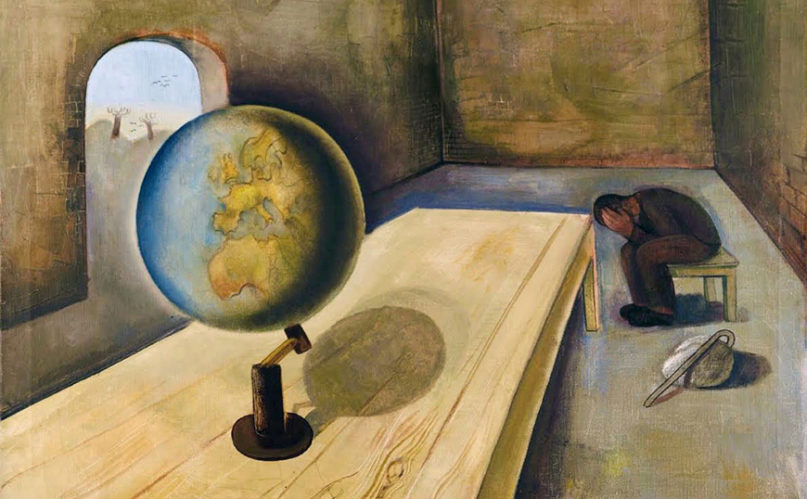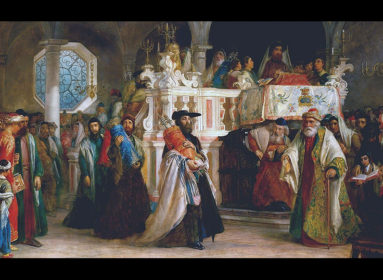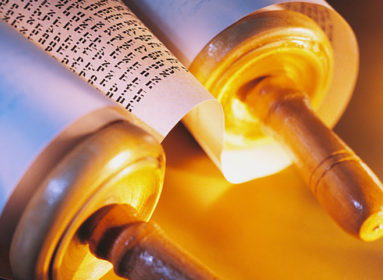
Why you must see “Auschwitz. Not long ago. Not far away” – an exhibition dedicated to the history of Auschwitz at New York’s Museum of Jewish Heritage.
By Sheila Horvitz
So you’ve been to Yad Vashem, The Holocaust Museum in D.C. and numerous other smaller and compelling museums and memorials around the world. Why then do you need to see the Auschwitz exhibit now on display at the Museum of Jewish Heritage in New York?
Three reasons come to mind:
(1) This exhibit presents, in the most focused and striking terms, the centrality of Auschwitz as the greatest site of mass murder and genocide in human history, where the Nazi plan for the Final Solution came to its fullest realization in the last years of the War.
(2) From this global overview, the exhibit brings you into the excruciatingly personal, using over 600 artifacts to tell the stories of victims whose lives were disrupted and destroyed by their deportation to Auschwitz and almost certain death. A talit, a shofar, a ring, a blouse, a shoe and sock discarded before entering the gas chamber – each of these artifacts represents an individual victim with whom we can identify, a flesh and blood story that brings the horror and tragedy of Auschwitz to life.

(3) The use of art as a view into the hearts and minds of Auschwitz victims was revelatory. I could not take my eyes away from the piece entitled “FEAR” by Felix Nussbaum, who spent the last years of his life illustrating a Jew’s experience of terror and fear of Nazi persecution. He moved from his home in Germany to other cities in Europe, was arrested, escaped, went into hiding, and was finally captured and deported to Auschwitz. The painting “FEAR” depicts Nussbaum in a self-portrait with his niece Marianne and reflects the fear, desperation and terror faced by Jews, a foreshadowing of their fate. Nussbaum and his niece were murdered at Auschwitz. He was 39 years old.

In 1943, a little more than a year before his murder, Nussbaum painted “Self Portrait with Jewish Identity Card.” In this portrait, the symbols of his Jewish identity do not come from his Jewish faith, but are symbols of persecution and degradation imposed upon him by the Nazis.

In “The Refugee”, painted in 1939, Nussbaum depicts a man in despair, reflecting his fear and desperation on the eve of the Second World War. Germany’s shadow is looming over Europe and there is no refuge, no escape for the Jew. In 1936, with the promise of Zionism yet to be realized, Chaim Weitzmann’s words described the hopelessness and despair of the Jew – a fitting inscription for this painting: “There are now two sorts of countries in the world, those that want to expel the Jews and those that don’t want to admit them.”
Art can be a powerful and emotional teacher.
Eastern CT Hadassah and the Jewish Federation of Eastern CT are sponsoring a bus trip to the Auschwitz exhibit at the Museum of Jewish Heritage in New York on Sunday, March 29. For information, contact Mimi at (860) 442-8062.
In addition, Eastern Connecticut Hadassah’s Annual Henny Simon Remembrance, which commemorates the life and values of a Colchester Holocaust survivor, will be held the weekend of April 24-27, and will feature Holocaust filmmaker, journalist, and social activist Emanuel Aronson Rund.
Sheila Horvitz is the education and Zionism chair of Eastern CT Hadassah and chair of the Hadassah Annual Henny Simon Remembrance.








 Southern New England Jewish Ledger
Southern New England Jewish Ledger













